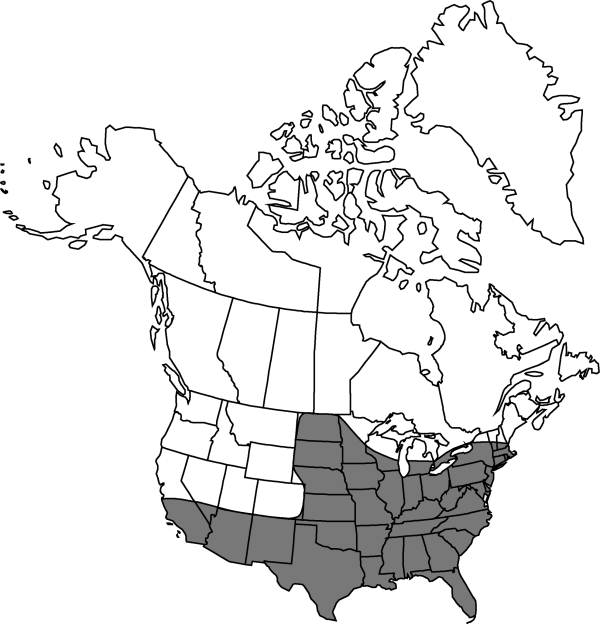Portulaca grandiflora
Bot. Mag. 56: plate 2885. 1829.
Plants annual; roots fibrous. Stems prostrate to suberect; trichomes conspicuous at nodes and in inflorescence; branches to 30 cm. Leaf blades linear to lanceolate, terete to hemispheric, 5–30 × 1–5 mm, apex acute or subacute; involucrelike leaves 8–9(–14). Flowers 25–55 mm diam.; petals pink, red, purple, yellow, bronze, or white, obovate, 15–25 × 15–20 mm; stamens 40 or more; stigmas 5–8. Capsules ovoid, (3.5–)4–6.5 mm diam. Seeds steely gray, often iridescent, orbiculate or elongate, flattened, 0.75–1 mm diam.; surface cells obscurely stellate with tubercles mostly abaxially. 2n = 18.
Phenology: Flowering late spring–fall.
Habitat: Sandy soils
Elevation: 0-2000 m
Distribution

Ont., Ala., Ariz., Ark., Calif., Colo., Conn., Del., D.C., Fla., Ga., Ill., Ind., Iowa, Kans., Ky., La., Md., Mass., Mich., Minn., Miss., Mo., Nebr., Nev., N.H., N.J., N.Mex., N.Y., N.C., N.Dak., Ohio, Okla., Pa., R.I., S.C., S.Dak., Tenn., Tex., Vt., Va., W.Va., Wis., South America, naturalized in Europe.
Discussion
Portulaca grandiflora is naturalized in gardens and has escaped to roadsides and waste places. Studies of seed surfaces from specimens representing 100 years of collections with distribution over the United States show remarkable consistency in seed morphology. Tubercles may extend onto the lateral surface, where they are widely scattered. Only one specimen was found with no tubercles at all.
Selected References
None.